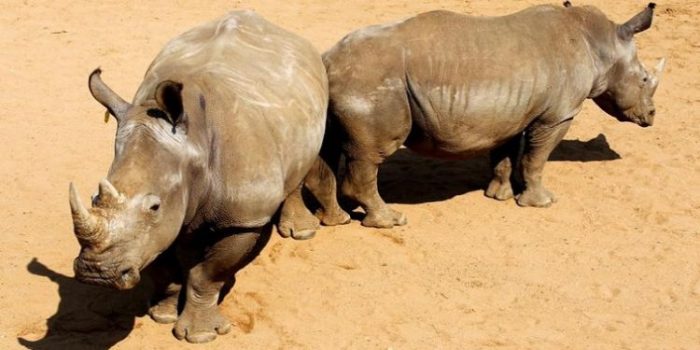Zimbabwe’s struggle for self-rule could not be complete without the name Mwalimu Julius Nyerere, whose Pan-Africanist determination for a free Africa could not be overemphasised as he bonded the people of Southern Africa into one political soul devoid of geographical limitations in their quest for freedom.
This was said by Information, Publicity and Broadcasting Services Minister Monica Mutsvangwa during her visit here to retrace the liberation struggle route, which saw Zimbabwean cadres from both the Zimbabwe African National Liberation Army (Zanla) and the Zimbabwe People’s Liberation Army (Zipra), among other liberation armies from the region, being trained in Tanzania.
“We feel at home from Mt Kilimanjaro to Cape of Good Hope; from the Atlantic Ocean to the Indian Ocean,” she said.
“Dar es Salaam is my home as much as is Lusaka, Luanda, Maputo, Harare, Windhoek and Tshwane (Pretoria).”
Mwalimu Nyerere, said Minister Mutsvangwa, mentored ZANU’s first Chairman, the late national hero, Cde Herbert Chitepo, who bonded well with the poor, and had a vision for fruitful relations between Zimbabwe and Tanzania.
When his country gained independence from colonial bondage, Mwalimu Julius Nyerere, without having much in terms of resources, committed himself to the African cause.
His passionate drive for the liberation cause saw him setting up training camps to give impetus to the armed struggle in Southern Africa where liberation cadres from FRELIMO of Mozambique, MPLA of Angola, ANC of South Africa, SWAPO of Namibia and ZANU PF and PF ZAPU of Zimbabwe were hosted, fed and trained in Tanzania.
These camps, which hosted both men and women included Nachingweya in the Lindi region, Mgagao in Iringa, Kongwa in Morogoro, Chunya in Mbeya and Bagamoyo in the Coastal Region, about 75km from Dar es Salaam.
Such rich history, Minister Mutsvangwa said, should not be allowed to die, but should be preserved for future generations, to inform them about their identity, and inculcate a sense of patriotism, as well as oneness in them.
Hence, the objective of her visit here is to document how freedom fighters left Zimbabwe, known as Rhodesia then, to Tanzania using the three main routes open to them; either via Botswana, Zambia, or Mozambique; how they were trained and deployed to the front through interaction of stories and voices.
The visit saw Minister Mutsvangwa, accompanied by Information, Publicity and Broadcasting Services permanent secretary, Mr Nick Mangwana, meeting Tanzania’s Culture, Arts and Sports Minister, Mr Innocent Bashungwa, at his offices in Magufuli City, Dodoma, and regional commissioner for Dodoma, Mr Antony Mtaka.
She later met the commissioner for Kongwa District, Mr Remidius Mwena Emmanuel and district chairman, Mr White Zuberi, before taking a tour of the Kongwa camp.
Mr Emmanuel highlighted that since history is a critical link to both the past and the future, it should be preserved for posterity and regeneration where patriotism becomes a rallying point.
Mr Zuberi underscored the essence of Pan-Africanism embodied in the spirit of the camp, which has brought together peoples of the sub-region in their struggle against colonialism, and has endured the vagaries of both time and geographical boundaries.
He emphasised that historical sites, like Kongwa, should be spruced up and preserved for future generations.
Minister Mutsvangwa later visited the Multinational Liberation Movement Medical Training Centre, a site used to provide medical training for the Zimbabwean freedom fighters, among others, where the former deputy principal and chief academic, Dr Salem Ibrahim Mwandu (76), reflected on his experiences at the centre since its establishment in 1976.
The historic journey would later take Minister Mutsvangwa and her team to Kaole College of Agriculture in Bagamoyo, which received a cash donation of US$60 000 from President Mnangagwa in 2018 as a token of appreciation to the community that looked after him during the struggle.
Minister Mutsvangwa then toured the African Liberation Heritage Programme Museum and the house that national hero and former President Robert Mugabe once lived in, in Dar es Salaam.
Kaole College of Agriculture principal, Mr Sinani Ramadhani Simba, thanked the President Mnangagwa for the donation, saying the money was put to good use.
“The money was used to rehabilitate five dormitories, five classrooms, a veterinary clinic and establishment of a computer lab,” he said.
“Works included putting floor tiles in all the five dormitories and computer lab, installation of a new electrical system in the five classrooms and five dormitories; installation of new clean water and sewerage systems in five dormitories, fixing ceiling boards in the five classrooms, computer lab and all five dormitories, repair of all 25 toilets in the dormitories and procurement of 30 desktop computers for the computer lab, a photocopier and a printer for office works.”
Mr Simba said Bagamoyo remained a place of emotions for many Africans who left their homes in pursuit of freedom from the shackles of colonial subjugation.
Prominent revolutionaries who passed through Kaole, established in 1963, were President Mnangagwa, the late Mozambican President Samora Machel and his successor President Joachim Chissano.
Source: The Herald



